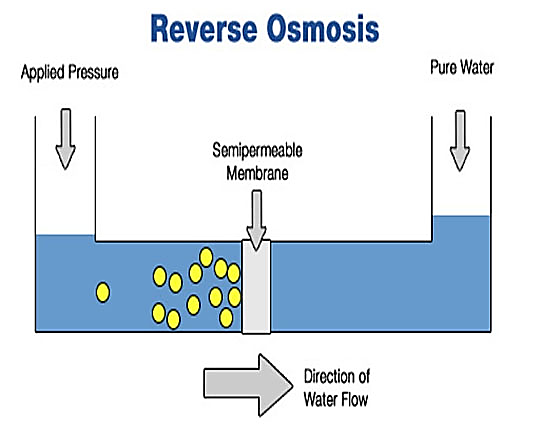
Seawater Desalination with Reverse Osmosis Plant
All Reverse Osmosis vegetation are essentially Desalination Vegetation but desalination is being referred to sea water Commonly.As sea h2o has extremely significant TDS requires really significant tension to force sea water by means of membranes which are various then brackish drinking water membranes.
Reverse Osmosis Plant Information:
A reverse osmosis plant is usually a producing plant, where water is purified and desalinated by forcing h2o via a membrane, typically referred to as a reverse osmosis method. Water produced by plant RO might be used for a number of functions like desalination, wastewater remedy, along with the reclamation of dissolved minerals.
RO Plant Description
A median drinking h2o RO plant procedure necessitates 6 KW hours of electrical energy to desalinate 1 cubic meter of h2o. Reverse osmosis h2o vegetation demands a variety of pre-treatment procedures which include softening, DE chlorination, and anti-scale treatment method. Adhering to pre-treatment, superior levels of pressure mail drinking water via a semi-permeable membrane, which holds all contaminants except drinking water.
RO Plant Style
To improve the effectiveness and lifetime of the Reverse Osmosis plant, successful pretreatment of the feed drinking water is required. Variety of the proper pretreatment will improve efficiency and membrane lifetime by lowering:
Fouling
Scaling
Membrane Degradation
RO plant structure is consisting of:
Deciding pretreatment need of Reverse Osmosis Plant
In the event the feed h2o has traces of hefty metals, it is extremely proposed to dose some chlorine to change the dissolved weighty metals to Actual physical type, the media filter will filter the vast majority of it inside a ro drinking water purifier plant.
Reverse Osmosis Plant Number of membrane
Membrane components are a vital Element of RO plants. The proteins (mainly polyamide) that makeup membrane aspects change according to the ending clarity and consumption drinking water seawater or brackish drinking water and many others
Waterman engineers Australia RO plant for seawater desalination
Waterman Engineers in Australia has built a Reverse Osmosis (RO) plant for seawater desalination, which provides numerous rewards about other desalination solutions. Below are a few vital great things about their RO plant:
Electrical power Performance:
Compared to other desalination methods like thermal distillation, RO demands much less Power. Waterman Engineers' RO plant utilizes advanced membrane technology, allowing it to work at decreased pressures and lessen Desalination Plant Manufacturer Total Vitality consumption.
Environmental Effects:
RO generates a lot less brine discharge when compared with thermal strategies, decreasing the influence on marine ecosystems. This aligns with Australia's concentrate on environmental sustainability and conservation.
Superior Drinking water Purity:
The RO process correctly eliminates salts, minerals, and impurities, producing significant-top quality freshwater that satisfies stringent drinking drinking water requirements. This dependability is essential for giving Protected and clean up water to communities.
Modular Style and design:
Waterman Engineers' RO plant employs a modular style, letting for scalability and flexibility. This is particularly beneficial for areas with varying drinking water requires, as modules may be additional or modified appropriately.
Reduced Footprint:
RO plants commonly Have got a smaller sized Bodily footprint as compared to thermal desalination crops, which often demand intensive infrastructure for heating and cooling procedures.
Brief Start-Up and Shutdown:
RO plants could be commenced and stopped somewhat immediately, allowing for much better responsiveness to altering water demands and emergencies.
Reduce Chemical Usage:
In contrast to Another desalination strategies, RO needs fewer chemicals for Procedure and cleansing, minimizing chemical-associated environmental issues.
Regularity in General performance:
The RO system is fewer delicate to feedwater good quality fluctuations than other strategies, ensuring a far more regular efficiency with time.
Cost-Success:
When Preliminary investment prices might be substantial, RO crops have a tendency to obtain decrease operational and maintenance expenditures Over time compared to thermal approaches.
Reverse Osmosis (RO) is really a drinking water purification process that works by using a partially permeable membrane to get rid of ions, undesired molecules, and larger particles from drinking drinking water. By implementing stress to overcome osmotic tension, it enables the passage of drinking water molecules though rejecting contaminants, thereby making clean up water on a single aspect of your membrane and concentrated impurities on the other.
The Doing work basic principle of the Reverse Osmosis (RO) plant involves applying stress into a saline Alternative to drive water molecules through a semi-permeable membrane. This membrane enables only water to pass although rejecting salts, contaminants, and impurities, leading to purified drinking water about the permeate aspect and also a concentrated Alternative of contaminants on the brine side.
Some great benefits of Reverse Osmosis include creating higher-top quality, thoroughly clean water by removing contaminants, becoming efficient and price-helpful eventually, demanding nominal chemical use, and currently being adaptable to various scales of Procedure from smaller household programs to huge municipal plants.
RO crops have replaced Demineralisation (DM) crops mainly because they generally supply a much more economical and value-efficient Alternative for drinking water purification. RO methods You should not call for the regeneration chemicals that resin-centered DM plants do and will get rid of a broader range of contaminants, which include dissolved solids and microorganisms.
Waterman Engineers Australia probably uses Reverse Osmosis (RO) vegetation for seawater desalination by forcing seawater via a semi-permeable membrane to remove salt and various impurities. This process makes fresh, potable drinking water within the ocean, addressing water scarcity and giving a sustainable supply for different requires.